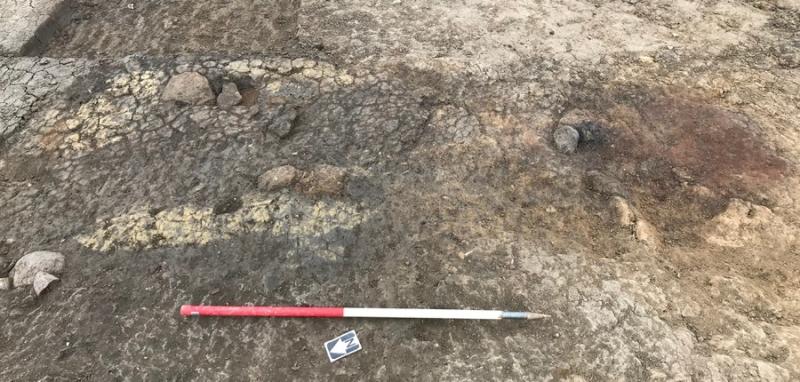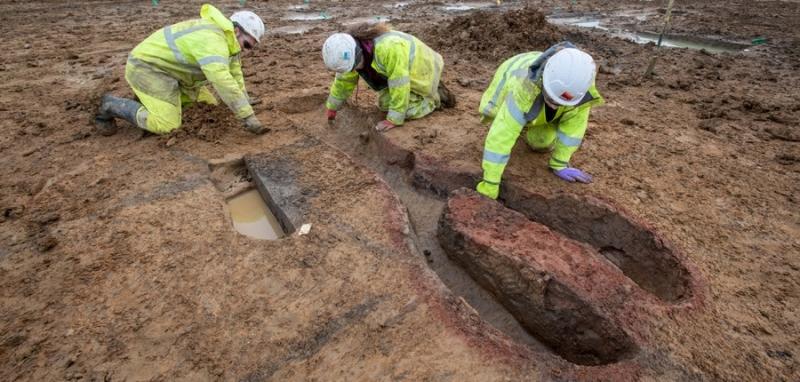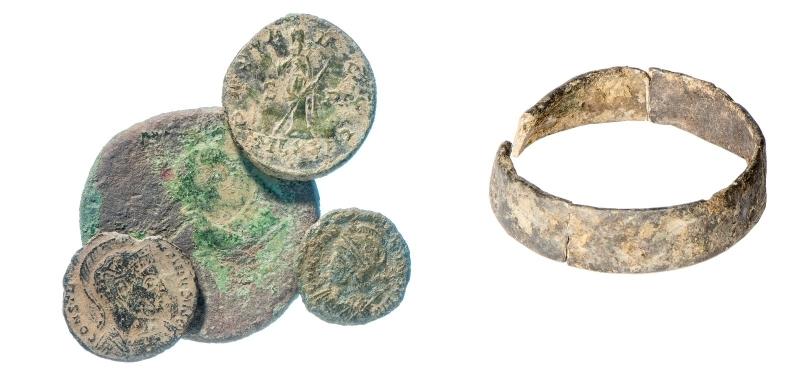When in Rome… eating, drinking and trading at Field 44
The archaeological programme of the National Highways A428 Black Cat to Caxton Gibbet Improvement Scheme continues and our work at Field 44 in Bedfordshire with the Cambridge Archaeological Unit is shedding light on a new chapter of Field 44’s history. This rural site was first built in the Middle Iron Age (c. 300-100 BC), but people continued to live here for centuries, even after the Roman Conquest in AD 43.
During the Roman period (AD 43-410) Field 44 continued to grow in size and wealth, becoming an important production centre, with evidence of trade that that reached beyond our shores.
Drinking beer, making pots
In the centuries following the Romans’ arrival in Britain, farming remained important at Field 44. The archaeobotanists (specialists focusing on the study of ancient plant remains) working on this site found spelt and wheat grains.
After harvest, crops need to be threshed, to remove the edible grains from the straw they are attached to. These grains can’t simply be stored as they are. They must be slowly dried to make sure they don’t go bad until they’re eaten or so they can last until the next harvest. To do this, people used a structure similar to an oven called a ‘corn dryer’.
We’ve found one of these corn dryers at Field 44, but as we know, bread isn’t the only thing one can make with cereals…enter malt! Malt is the first necessary ingredient to make beer. It is produced by soaking grains in water, allowing them to germinate (begin sprouting) then slowly drying them. At Field 44 we found germinated spelt by the oven, which means it wasn’t only used to dry grain, but also to produce malt. Were they brewing beer?

We’ve also recovered a vast number of wasters – vessels which failed during the firing process. This was a lucky find, because it allowed our pottery specialists to understand when the kiln was used. Based on the shape of the vessels, we know that this kiln was in use between AD 150 and AD 400. It is in this period that the settlement at Field 44 reached its peak.

If you can't make it, buy it
Farming, cereal processing, and pottery production were important activities at Field 44. However, you shouldn’t imagine the people here as a secluded community, surviving only on what they could make themselves. There are clear signs that trade was also vital for those living at Field 44.
We’ve identified large fragments of a pottery vessel called amphora during our excavations. Amphorae are large containers often used to hold liquids. They come in many different shapes and can be used to reconstruct where they were made and what was inside them. The amphora found at Field 44 is of a kind called ‘Dressel 20’, produced in southern Spain along the Guadalquivir River. In Roman times this region was famous for the production of olive oil, which was traded throughout the Roman empire. As a result, Dressel 20 amphorae are often found at Roman sites, especially in the western provinces. The example from Field 44 suggests an interesting connection between this rural site in Bedfordshire and Spain.
This isn’t the only object that travelled a long way to Field 44. We also found fragments of Samian ware, a type of fine Roman pottery with a smooth surface and bright orange colour. It might have been produced in Gaul (modern France), suggesting yet another connection with the continent.
And this is not all. More than 40 late Roman coins, mainly dated to AD 301-400, were also found on site, their number being far greater than what is expected of a typical farmstead. Another sign of wealth is the discovery of a silver ring, found broken into pieces. Our archaeologists also unearthed a copper weight. This small, commonplace object provides further clues that Field 44 was an important local trading centre. These weights would have been used on a set of scales to calculate the price of various goods – suggesting this was a place where people came together to buy, sell and haggle!

From these exciting finds it becomes clear that Field 44 was no average farmstead, but rather a thriving rural settlement with links that stretched beyond the region to different corners of the Roman empire. These remains survived for centuries, and we are now bringing them back to light. As we continue to study them, they will reveal stories of a time long gone but far from lost.
JOIN US ON OUR JOURNEY!
- @A428Cat
- Facebook.com/A428BlackCat
- #A428BlackCat
- Find out more about the A428 National Highways scheme
Excavations at Field 44 are being undertaken by archaeologists from MOLA and Cambridge Archaeological Unit, as part of the proposed National Highways A428 Black Cat to Caxton Gibbet Improvement Scheme managed by Skanska.